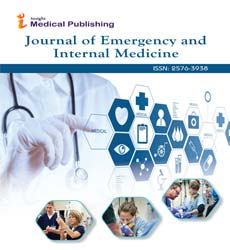Abstract
Bacteriologic Profile and Drug Sensitivity Pattern of Urinary Tract Infection in Children with Renal Diseases in a Tertiary Care Hospital, Dhaka, Bangladesh
Background: Development of regional bacteriologic profile and drug sensitivity pattern of urinary tract infection (UTI) is very important to treat early and appropriately. Our aim was to evaluate the bacteriological profile and antibiotic sensitivity patterns in children with UTI in different glomerular diseases.
Methodology: This prospective study was carried out in the Department of Pediatric Nephrology, Bangabandhu Sheikh Mujib Medical University, Dhaka from January 2015 to May 2017. All the admitted children up to 18 years of age with UTI were enrolled. Urine specimens were obtained by clean-catch method following careful preparation of the perineal area. Specimens were inoculated immediately in the Mackonky’s media.
Results: Among 1483 admitted children only 102 (6.87%) had significant UTI. Escherichia coli (51.6%) were the most common aetiological agent, followed by Pseudomonas (17.7%), Klebsiella spp. (14.5%), Enterococcus (8%), Streptococcus spp. (4.8%) and proteus (3.2%). The most sensitive drugs were imepenem, meropenem, ceftriaxone, ceftazidime and gentamicin.
Conclusion: The low growth of microorganisms in this study may be due to some patients were already getting antibiotics while collecting the specimen. The isolated organisms showed resistance to a large number of oral and per enteral antibiotics. Gentamicin may be the first option of empiric therapy while waiting for culture reports. Meropenem can be reserved.
Author(s): Afroza Begum, Md. Firoz Anjum, Saimul Huq S, Uddin GM, Rahman MH, Roy RR, Abdullalh Al-Mamun and Tahmina Jesmin
Abstract | Full-Text | PDF
Share This Article
Google Scholar citation report
Citations : 62
Journal of Emergency and Internal Medicine received 62 citations as per Google Scholar report
Abstracted/Indexed in
- Google Scholar
- China National Knowledge Infrastructure (CNKI)
- Euro Pub
Open Access Journals
- Aquaculture & Veterinary Science
- Chemistry & Chemical Sciences
- Clinical Sciences
- Engineering
- General Science
- Genetics & Molecular Biology
- Health Care & Nursing
- Immunology & Microbiology
- Materials Science
- Mathematics & Physics
- Medical Sciences
- Neurology & Psychiatry
- Oncology & Cancer Science
- Pharmaceutical Sciences

